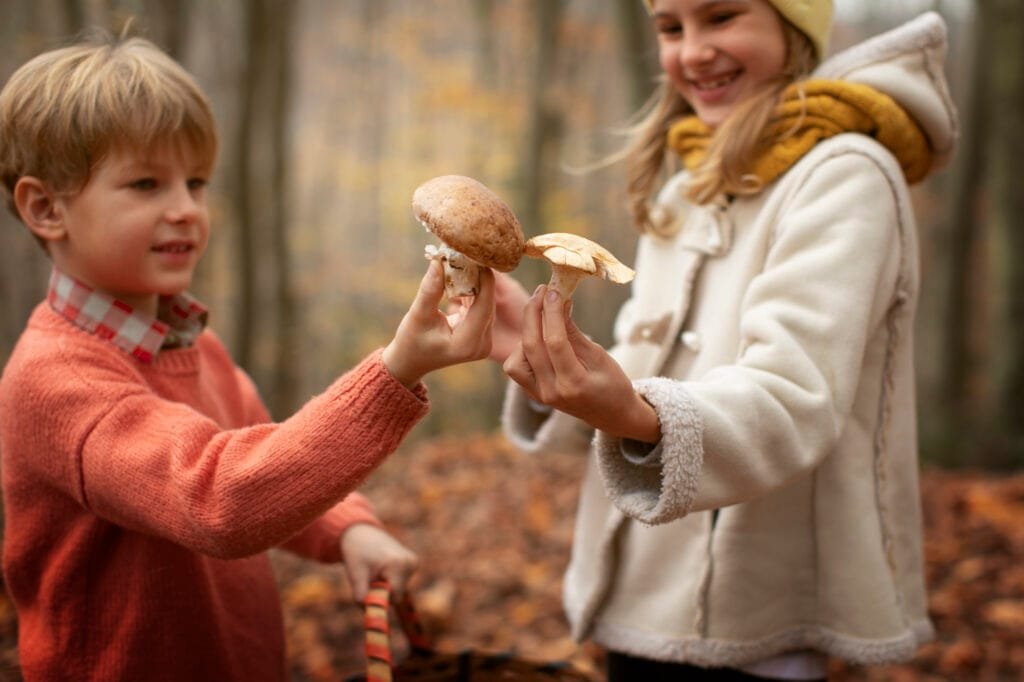Modern families face digital overload and disconnection. Parents report spending less than 30 minutes in meaningful conversation with their children daily. This post presents research-backed activities to rebuild family connections through mindfulness practices.
The Science Behind Screen-Free Time
Brain imaging studies reveal patterns concerning screen use. Scientists observe decreased activity in areas responsible for empathy and emotional processing when people engage with screens extensively.
Screen use releases dopamine, creating addictive patterns. Studies from Harvard Medical School show that face-to-face interactions activate different brain regions linked to empathy and emotional intelligence. Dr. Sarah Thompson, a child psychologist, states:
“Screen-free time allows families to develop deeper emotional connections and practice active listening skills.”
Inner critic says: “But screens make parenting easier! How will I keep the kids entertained?”
The evidence supports intentional screen-free time. Families can use this knowledge to make informed choices about digital consumption and connection.

Mindful Activities for Family Connection
Each activity builds specific skills and creates unique bonding opportunities. These practices combine ancient wisdom with modern psychology for maximum impact.
1. Nature Scavenger Hunt
- Create a list of natural items to find
- Practice mindful walking and observation
- Share discoveries and stories
- Build environmental awareness
Benefits: Research shows nature exposure reduces cortisol levels by 21%. Children who spend time in nature show improved attention spans and creative problem-solving abilities. The American Academy of Pediatrics confirms that outdoor activities strengthen family bonds and improve physical health.
Dr. Emily Watson notes:
“Nature scavenger hunts combine physical activity, mindfulness, and learning in a way that engages multiple senses and promotes neural development.”
Implementation Tips: Create a seasonal checklist of items. Start with 5-10 items for younger children and increase complexity gradually. Photograph discoveries to create a family nature journal. Set a specific timeframe (30-45 minutes works best). End the activity with a sharing circle where each family member describes their favorite find.
2. Family Cooking Sessions
- Choose recipes together
- Practice mindful eating
- Learn about nutrition
- Share family traditions
Benefits: Cooking together develops mathematical thinking through measuring and timing. Studies show children who cook with family make healthier food choices later in life. The activity builds fine motor skills, teaches patience, and creates opportunities for cultural learning.
Professor James Chen states:
“The kitchen serves as a natural laboratory for teaching life skills, nutrition, and family values.”
Implementation Tips: Choose age-appropriate tasks. Create a weekly menu together. Practice mindful tasting exercises. Discuss food origins and cultural significance. Document family recipes. Start with 30-minute simple recipes and progress to more complex dishes.
3. Gratitude Circle
- Sit in a circle
- Share three daily gratitudes
- Practice active listening
- Build emotional vocabulary
Benefits: Practising gratitude increases happiness levels by 25% according to positive psychology research. Regular gratitude practice strengthens neural pathways associated with empathy and compassion. Children in gratitude practices show improved academic performance and social relationships.
Implementation Tips: Set a daily time (morning or evening works best). Use a special object as a talking stick. Create a gratitude journal. Practice active listening without interruption. Start with one gratitude and build to three. Include challenges overcome as gratitude topics.
4. Movement Medicine
- Dance to favourite music
- Create simple choreographies
- Express emotions through movement
- Release physical tension
Benefits: Physical movement releases endorphins and reduces anxiety. Dance therapy research shows improved emotional regulation in children. Group movement activities strengthen non-verbal communication and spatial awareness.

Implementation Tips: Create a special playlist together. Designate a movement space. Start with 5-minute sessions. Include different music styles. Allow free expression without judgment. End with a calm-down period.
5. Art Meditation
- Draw or paint quietly
- Focus on the creative process
- Share artwork without judgment
- Express inner experiences
Benefits: Art therapy reduces stress hormones and increases focus. Creative expression helps process complex emotions. Group art activities build acceptance and reduce perfectionism.
Implementation Tips: Provide various materials. Set a timer for focused creation (15-20 minutes). Create in silence. Share artwork without critique. Display family art pieces. Rotate art materials weekly.
6. Storytelling Workshop
- Create stories together
- Use imagination
- Practice speaking skills
- Build family narratives
Benefits: Storytelling improves vocabulary and listening skills. Family stories strengthen cultural identity and resilience. Narrative skills support academic success and emotional intelligence.
Implementation Tips: Use story prompts. Take turns adding to stories. Record family stories. Create character cards. Practice active listening. Set a regular storytelling time.
7. Garden Mindfulness
- Plant seeds together
- Observe growth
- Practice patience
- Connect with nature
Benefits: Gardening activities reduce stress and anxiety. Growing food increases nutrition knowledge. Regular garden practice builds patience and responsibility.
Implementation Tips: Start with easy-to-grow plants. Create individual plant responsibilities. Keep a growth journal. Practice quiet observation time. Share garden maintenance tasks.
8. Sound Safari
- Listen to environmental sounds
- Identify different noises
- Practice concentration
- Develop awareness
Benefits: Auditory awareness improves concentration and memory. Sound activities develop language skills. Mindful listening reduces stress and improves sleep quality.
Implementation Tips: Create sound maps. Practice in different environments. Use recording devices. Compare morning and evening sounds. Keep a sound journal.
9. Family Yoga
- Learn simple poses
- Practice breathing exercises
- Build body awareness
- Create peaceful moments
Benefits: Yoga improves flexibility and balance. Group practice builds trust and connection. Regular yoga practice reduces childhood anxiety and improves sleep.
Implementation Tips: Learn basic poses together. Create animal-themed poses for children. Practice for 10-15 minutes initially. Use child-friendly breathing exercises. End with relaxation time.
10. Mindful Games
- Play concentration games
- Practice memory skills
- Build focus
- Share laughter
Benefits: Games build executive function skills. Group play strengthens social bonds. Mindful games improve attention span and emotional regulation.
Implementation Tips: Start with simple concentration games. Increase difficulty gradually. Create family-specific rules. Practice taking turns. End games before boredom sets in.
Dr. Sarah Miller concludes:
“These activities create neural pathways that support emotional regulation and social connection throughout life.”
Remember that consistency matters more than perfection. Choose activities that match your family’s interests and energy levels.
Implementation Tips
Success requires structure and consistency. Research shows families need specific strategies to maintain screen-free practices.
Research shows that consistent practice creates lasting habits. Start with 30-minute sessions. Increase duration gradually. Create a dedicated screen-free space.
Inner critic says: “This takes too much time and effort!”
Small, consistent steps create lasting change. Each family finds their unique rhythm with practice.

Benefits of Screen-Free Activities
Scientific studies demonstrate multiple positive outcomes from regular screen-free family time. These benefits extend beyond immediate family dynamics.
Professor Michael Chen from Stanford University reports:
“Families who spend quality screen-free time together show improved communication patterns and reduced stress levels.”
- Enhanced emotional bonds
- Improved communication
- Reduced anxiety
- Better sleep patterns
- Increased creativity
The positive effects compound over time, creating stronger, more resilient family units.
Call to Action
Take the first step toward meaningful family connection. Transform your family dynamics with professional guidance. Book a private online session to learn personalized mindfulness techniques for your family.
Contact: info@emiliyageorgieva.com
Book now:
Remember: Each moment spent together creates lasting memories and stronger bonds.




